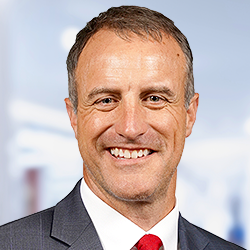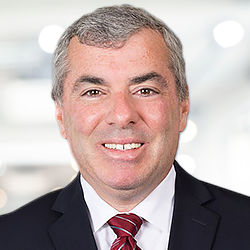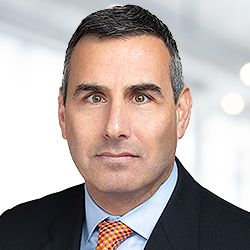Overview
Fund Tagline
U.S. small cap growth: A big opportunity for long-term investors
Fund Description
Following sharp compression in earnings multiples year to date, U.S. small cap growth stocks are at their cheapest levels relative to large cap growth stocks since January 2001. Is now the time to reassess exposure to large cap growth in favor of small cap growth? We see reasons to consider U.S. small cap growth right now.
Product Facts
| Ticker Symbol | VWYFX |
| CUSIP | 92918A782 |
| Inception Date | October 7, 2022 |
| Dividends Paid | Annually |
| Min. Initial Investment | $1,000.00 |
- Invests primarily in stocks of smaller, lesser-known U.S. companies which fall within the range of the Russell 2000 Growth Index.
- Seeks companies with superior revenue and earnings potential that are trading at sustainable valuations.
- Consistently applied philosophy and process across various market cycles driven by bottom-up fundamental analysis.
- Diversified, high quality, risk adjusted portfolio seeking to outperform the Russell 2000 Growth Index.
The Fund seeks capital appreciation.
- Invests primarily in stocks of smaller, lesser-known U.S. companies which fall within the range of the Russell 2000 Growth Index.
- Seeks companies with superior revenue and earnings potential that are trading at sustainable valuations.
- Consistently applied philosophy and process across various market cycles driven by bottom-up fundamental analysis.
- Diversified, high quality, risk adjusted portfolio seeking to outperform the Russell 2000 Growth Index.
The Fund seeks capital appreciation.
Performance
Average Annual Total Returns %
As of November 30, 2025
As of September 30, 2025
| Most Recent Month End | YTD | 1 YR | 3 YR | 5 YR | 10 YR | Inception | Expense Ratios | |
|---|---|---|---|---|---|---|---|---|
| Gross | Net | |||||||
| Net Asset Value | +14.37 | +3.47 | +15.37 | +9.29 | +12.29 | — | 1.26% | 1.26% |
| With Sales Charge | +7.79 | -2.48 | +13.12 | +8.01 | +11.63 | — | ||
| Net Asset Value | +8.95 | +7.75 | +17.78 | +11.69 | +12.42 | — | 1.26% | 1.26% |
| With Sales Charge | +2.68 | +1.55 | +15.48 | +10.38 | +11.76 | — | ||
| Russell 2000 Growth Index | +14.48 | +5.11 | +13.54 | +5.31 | +9.18 | — | — | — |
| Russell 2000 Growth Index | +11.65 | +13.56 | +16.68 | +8.41 | +9.91 | — | — | — |
Inception Date - Class A: October 7, 2022
Current Maximum Sales Charge: 5.75%
The performance quoted represents past performance and does not guarantee future results. Current performance may be lower or higher than the performance information shown. The investment return and principal value of an investment in the Portfolio will fluctuate, so that your shares, when redeemed, may be worth more or less than their original cost. See above "Average Annual Total Returns %" for performance information current to the most recent month-end.
Returns for the other share classes will vary due to different charges and expenses. Performance assumes reinvestment of distributions and does not account for taxes.
Total investment return at net asset value has been calculated assuming a purchase at net asset value at the beginning of the period and a sale at net asset value at the end of the period; and assumes reinvestment of dividends, capital gain distributions and return of capital distributions/allocations, if any, in accordance with the provisions of the dividend reinvestment plan. Net asset value equals total Fund assets net of Fund expenses such as operating costs and management fees. Total investment return at net asset value is not annualized for periods less than one year.
The Russell 2000 Growth Index is an unmanaged index that measures the performance of smaller U.S. companies with greater-than-average growth orientation. It is a small-cap stock market index that makes up the smallest 2,000 stocks in the Russell 3000 Index.
Past performance does not guarantee future results.
Growth of a $10,000 Investment
For the period 10/07/2022 through 11/30/2025
Ending Value: $16,620.00
The performance quoted in the "Growth of a $10,000 Investment" chart represents past performance. Performance shown is without sales charges; had sales charges been deducted, performance would have been less. Ending value includes reinvestment of distributions.
Average Annual Total Returns %
As of November 30, 2025
As of September 30, 2025
| Most Recent Month End | YTD | 1 YR | 3 YR | 5 YR | 10 YR | Inception | Expense Ratios | |
|---|---|---|---|---|---|---|---|---|
| Gross | Net | |||||||
| Net Asset Value | +14.37 | +3.47 | +15.37 | +9.29 | +12.29 | — | 1.26% | 1.26% |
| With Sales Charge | +7.79 | -2.48 | +13.12 | +8.01 | +11.63 | — | ||
| Net Asset Value | +8.95 | +7.75 | +17.78 | +11.69 | +12.42 | — | 1.26% | 1.26% |
| With Sales Charge | +2.68 | +1.55 | +15.48 | +10.38 | +11.76 | — | ||
| Russell 2000 Growth Index | +14.48 | +5.11 | +13.54 | +5.31 | +9.18 | — | — | — |
| Russell 2000 Growth Index | +11.65 | +13.56 | +16.68 | +8.41 | +9.91 | — | — | — |
Inception Date - Class A: October 7, 2022
Current Maximum Sales Charge: 5.75%
The performance quoted represents past performance and does not guarantee future results. Current performance may be lower or higher than the performance information shown. The investment return and principal value of an investment in the Portfolio will fluctuate, so that your shares, when redeemed, may be worth more or less than their original cost. See above "Average Annual Total Returns %" for performance information current to the most recent month-end.
Returns for the other share classes will vary due to different charges and expenses. Performance assumes reinvestment of distributions and does not account for taxes.
Total investment return at net asset value has been calculated assuming a purchase at net asset value at the beginning of the period and a sale at net asset value at the end of the period; and assumes reinvestment of dividends, capital gain distributions and return of capital distributions/allocations, if any, in accordance with the provisions of the dividend reinvestment plan. Net asset value equals total Fund assets net of Fund expenses such as operating costs and management fees. Total investment return at net asset value is not annualized for periods less than one year.
The Russell 2000 Growth Index is an unmanaged index that measures the performance of smaller U.S. companies with greater-than-average growth orientation. It is a small-cap stock market index that makes up the smallest 2,000 stocks in the Russell 3000 Index.
Past performance does not guarantee future results.
Growth of a $10,000 Investment
For the period 10/07/2022 through 11/30/2025
Ending Value: $16,620.00
The performance quoted in the "Growth of a $10,000 Investment" chart represents past performance. Performance shown is without sales charges; had sales charges been deducted, performance would have been less. Ending value includes reinvestment of distributions.
Portfolio
Portfolio Statistics
As of November 30, 2025
| Number of Holdings Number of Holdings Number of Holdings in the investment. | 100 |
| P/E next 12 months P/E P/E (next 12 months) calculates the price of a stock divided by its earnings per share. | 39.81 |
| P/B trailing 12 months P/B Price to book ratio (trailing 12 month) calculates the ratio of a stock’s price to its book value. | 6.03 |
| Weighted Average Market Cap millions Weighted Average Market Cap Weighted Average Market Capitalization is the value of a corporation as determined by the market price of its issued and outstanding common stock. | $7,915.4 |
| EPS Growth (3-5 Year Estimate) EPS Growth (3-5 Year Estimate) The portion of a company's profit allocated to each outstanding share of common stock. EPS growth serves as an indicator of a company's profitability. | 19.43 |
| Active Share Active Share Active Share is a measure of the percentage of stock holdings in a manager's portfolio that differ from the benchmark index. | 99.73 |
| Price to Cash Flow Price to Cash Flow The ratio of a stock’s price to its cash flow per share. The price-to-cash flow ratio is an indicator of a stock’s valuation | 37.47 |
| ROA % ROA ROA is an indicator of how profitable a company is relative to its total assets. ROA gives an idea as to how efficient management is at using its assets to generate earnings. | 2.86 |
| Total |
Top Holdings
As of November 30, 2025
| Casella Waste Systems, Inc. | 2.41 |
| Tower Semiconductor Ltd | 2.28 |
| Alignment Healthcare, Inc. | 2.17 |
| Granite Construction Incorporated | 1.96 |
| Onto Innovation, Inc. | 1.93 |
| Standex International Corporation | 1.80 |
| Bloom Energy Corporation | 1.75 |
| Credo Technology Group Holding Ltd. | 1.70 |
| Five Below, Inc. | 1.65 |
| Repligen Corporation | 1.57 |
| Total | #,###.2 |
Portfolio Composition
As of November 30, 2025
| Foreign Stocks | 0.00 |
| Cash | 3.09 |
| EM Equity | 0.00 |
| US Common Stocks | 96.91 |
| Total | #,###.2 |
Top Sectors
As of November 30, 2025
| HEALTH CARE | 27.32 |
| INDUSTRIALS | 27.00 |
| INFORMATION TECHNOLOGY | 22.78 |
| FINANCIALS | 8.72 |
| CONSUMER DISCRETIONARY | 7.33 |
| ENERGY | 2.66 |
| CONSUMER STAPLES | 2.11 |
| MATERIALS | 1.04 |
| REAL ESTATE | 1.04 |
| COMMUNICATION SERVICES | 0.00 |
| UTILITIES | 0.00 |
| Total | #,###.2 |
Top Country Weightings
As of November 30, 2025
| United States | 92.21 |
| Israel | 2.28 |
| Cayman Islands | 1.70 |
| Ireland | 1.22 |
| Thailand | 1.12 |
| Canada | 1.04 |
| United Kingdom | 0.43 |
| Total | #,###.2 |
Portfolio Statistics
As of November 30, 2025
| Number of Holdings Number of Holdings Number of Holdings in the investment. | 100 |
| P/E next 12 months P/E P/E (next 12 months) calculates the price of a stock divided by its earnings per share. | 39.81 |
| P/B trailing 12 months P/B Price to book ratio (trailing 12 month) calculates the ratio of a stock’s price to its book value. | 6.03 |
| Weighted Average Market Cap millions Weighted Average Market Cap Weighted Average Market Capitalization is the value of a corporation as determined by the market price of its issued and outstanding common stock. | $7,915.4 |
| EPS Growth (3-5 Year Estimate) EPS Growth (3-5 Year Estimate) The portion of a company's profit allocated to each outstanding share of common stock. EPS growth serves as an indicator of a company's profitability. | 19.43 |
| Active Share Active Share Active Share is a measure of the percentage of stock holdings in a manager's portfolio that differ from the benchmark index. | 99.73 |
| Price to Cash Flow Price to Cash Flow The ratio of a stock’s price to its cash flow per share. The price-to-cash flow ratio is an indicator of a stock’s valuation | 37.47 |
| ROA % ROA ROA is an indicator of how profitable a company is relative to its total assets. ROA gives an idea as to how efficient management is at using its assets to generate earnings. | 2.86 |
| Total |
Top Holdings
As of November 30, 2025
| Casella Waste Systems, Inc. | 2.41 |
| Tower Semiconductor Ltd | 2.28 |
| Alignment Healthcare, Inc. | 2.17 |
| Granite Construction Incorporated | 1.96 |
| Onto Innovation, Inc. | 1.93 |
| Standex International Corporation | 1.80 |
| Bloom Energy Corporation | 1.75 |
| Credo Technology Group Holding Ltd. | 1.70 |
| Five Below, Inc. | 1.65 |
| Repligen Corporation | 1.57 |
| Total | #,###.2 |
Portfolio Composition
As of November 30, 2025
| Foreign Stocks | 0.00 |
| Cash | 3.09 |
| EM Equity | 0.00 |
| US Common Stocks | 96.91 |
| Total | #,###.2 |
Top Sectors
As of November 30, 2025
| HEALTH CARE | 27.32 |
| INDUSTRIALS | 27.00 |
| INFORMATION TECHNOLOGY | 22.78 |
| FINANCIALS | 8.72 |
| CONSUMER DISCRETIONARY | 7.33 |
| ENERGY | 2.66 |
| CONSUMER STAPLES | 2.11 |
| MATERIALS | 1.04 |
| REAL ESTATE | 1.04 |
| COMMUNICATION SERVICES | 0.00 |
| UTILITIES | 0.00 |
| Total | #,###.2 |
Top Country Weightings
As of November 30, 2025
| United States | 92.21 |
| Israel | 2.28 |
| Cayman Islands | 1.70 |
| Ireland | 1.22 |
| Thailand | 1.12 |
| Canada | 1.04 |
| United Kingdom | 0.43 |
| Total | #,###.2 |
Information provided is not a recommendation to buy or sell any security. Portfolio data is subject to daily change.
Distributions
Payment Frequency: Annually
| Distributions | Ex-Date
Ex-Date Date on which a stock begins trading without the benefit of the dividend. Typically, a stock’s price moves up by the dollar amount of the dividend as the ex-dividend date approaches, then falls by the amount of the dividend after that date. | Payable Date
Payable Date Date on which a declared stock dividend or a bond interest payment is scheduled to be paid. | Record Date
Record Date Date on which a shareholder must officially own shares in order to be entitled to a dividend. After the date of record, the stock is said to be ex-dividend. | Amount |
|---|---|---|---|---|
| Long-Term Capital Gain | 12/12/2025 | 12/12/2025 | 12/11/2025 | $2.587100 |
| Short-Term Capital Gain | 12/12/2024 | 12/13/2024 | 12/11/2024 | $0.435000 |
| Income Dividend | 12/12/2024 | 12/13/2024 | 12/11/2024 | $0.648300 |
| Long-Term Capital Gain | 12/12/2024 | 12/13/2024 | 12/11/2024 | $3.277400 |
| Totals: $6.947800 | ||||
Income Dividend: Payout to shareholders of interest, dividends, or other income received by the Fund, net of operating expenses. By law, all such income must be distributed to shareholders, who may choose to take the money in cash or reinvest it in more shares of the Fund.
Short-Term Capital Gain: The profit realized from the sale of securities held for less than one year.
Long-Term Capital Gain: Gain on the sale of a security where the holding period was 12 months or more and the profit was subject to the long-term capital gains tax.
Investment Team
Insights








Disclosures
Principal Risks
All investing involves risks of fluctuating prices and the uncertainties of rates of return and yield inherent in investing. You could lose money on your investment and any of the following risks, among others, could affect investment performance. The following principal risks are presented in alphabetical order which does not imply order of importance or likelihood: Company; Currency; Environmental, Social, and Governance (Equity); Focused Investing (Health Care Sector, Technology Sector); Foreign (Non-U.S.) Investments/ Developing and Emerging Markets; Growth Investing; Investment Model; Liquidity; Market; Market Disruption and Geopolitical; Other Investment Companies; Portfolio Turnover; Securities Lending; Small-Capitalization Company. Investors should consult the Fund’s Prospectus and Statement of Additional Information for a more detailed discussion of the Fund’s risks.
The fund discussed may be available to you as part of your employer sponsored retirement plan. There may be additional plan level fees resulting in personal performance that varies from stated performance. Please call your benefits office for more information.




